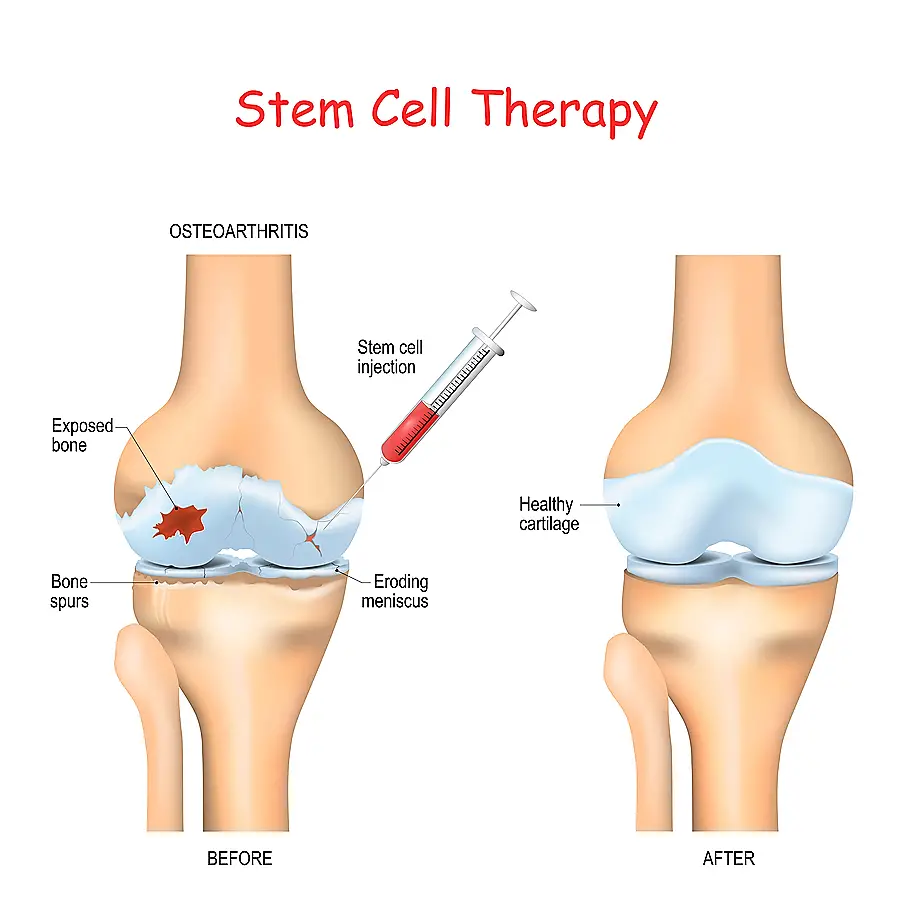Is the Next Frontier in Restorative Science – Already Here?
The Body’s Building Blocks
Repair. Restore. Replace. Stem cells have quickly become the magic bullets of modern health and wellness. The Mayo Clinic calls them the body’s “raw materials.” WebMD says they’re part of our internal “repair system.”
Stem cells can do what no other cell in the body can — make other types of cells, particularly specialized cells like brain, blood and muscle cells. Stem cells are the foundational, building blocks of the body. They’re durable and inexhaustible cells that renew themselves over and over again.
They can help repair and replenish critical cells in our skin, bones and organs which means they have tremendous restorative properties. But as we get “old and tired” so do our stem cells. Not only does their ability to reinvent themselves deteriorate but their sheer numbers diminish as well.
Embryonic versus Adult Stem Cells
There are two, main types of stem cells: Embryonic and Adult. Embryonic stem cells are obtained from early-stage embryos and are ‘pluripotent’ which means they’re extremely versatile and can become any cell in the body — making them an ideal tool for regenerating damaged tissues and organs. Their use is controversial, however, since the embryo is destroyed in the extraction process.
Adult stem cells are mature cells that come from our own body which eliminates ethical concerns. They’re found in human tissue like the brain, bone marrow, and muscles. Their primary role is to replace dying cells that cease to function due to injury or disease. They rush to the rescue to restore damaged tissue and replenish other critical cells like those found in the blood, skin and the lining of the gut.
Until recently, it was believed that adult stem cells had only cell-specific uses but new research suggests they’re capable of turning into more than one type of cell. This points to a broader regenerative potential, making them a viable treatment application for a wider range of maladies.
In March of 2019, Circulation Research, a publication of the American Heart Association —acknowledged new scientific revelations regarding these cells:
“Adult stem cells are the successful standard for stem cells. Although in the past their regenerative/reparative capacity was ignored, misunderstood, or even maligned, a rapidly growing host of clinical applications are being developed, and the clinical utility of adult stem cells is increasingly validated in the literature.”
Stem Cell Injections – the Good, the Bad and the Ugly
When we think of the restorative power of stem cells, we often think of stem cell injections. Injections are part of stem cell therapy, the crown jewel of regenerative medicine, and often a practical alternative to surgery. These injections use adult cells typically obtained through the blood, tissue fat, or bone marrow. Since the injectable cells come from the patient’s own body, the risk of an adverse event is dramatically reduced.

Stem cells are administered either intravenously or via intramuscular injections and in some cases, bring about fast results. When injected into a stiff and painful joint for instance, stem cells can help suppress inflammation, regenerate cartilage cells, and even shut down cartilage destruction. Stem cell therapy can be an effective treatment for neck and back pain, joint pain, tendinitis, bursitis and various forms of arthritis.
There are drawbacks, however. Stem cell injections are expensive and can cost anywhere from thousands of dollars per injection to tens of thousands of dollars, and they’re rarely fully covered by insurance.
Extracting stem cells, particularly from bone marrow, can be uncomfortable and cause site pain and swelling. And as with any therapeutic injection, there’s a risk of infection. But what’s most disheartening is the fact that these pricey injections simply don’t work for everyone and success rates vary dramatically.
Breakthrough X39 Patch Technology

There is a much less expensive and non-invasive way to tap the power of your body’s own stem cells, and it comes in the form of a revolutionary phototherapy patch. These patented patches use infrared light to support the body’s already-existing stem cells for a host of benefits.

LifeWave, a leader and innovator in phototherapy technology, has developed proprietary non-transdermal patches that use light to signal positive changes within the body to support the natural activity of stem cells without chemicals, pharmaceuticals, or needles.
LifeWave’s popular X39 patch, specifically elevates the peptide GHK-Cu, proven in numerous studies to support stem cell activity. GHK-Cu triggers the mobilization of stem cells to support: injury recovery, reduced inflammation, better sleep, greater energy and many other benefits — all without drugs or stimulants.
The company’s patented technology has undergone extensive clinical research; and X39 is recommended by a broad spectrum of health practitioners, world class sportspersons, Olympic-bound athletes, and tens of thousands of consumers who enjoy consistent, noticeable benefits month after month.
Perhaps the best part of X39 is that you apply it your skin like an adhesive pad or band-aid, and let it go to work. The technology within the patch and your own body heat does the rest.

LifeWave patches are safe and hypoallergenic. Users report a reduction in pain and discomfort, more vitality, enhanced sports performance, improved strength, flexibility, and a greater sense of well-being.

For all that X39 does, it’s an incredibly affordable, cost effective, and easy way to activate your body’s stem cells to support optimal health.
To purchase LifeWave’s Stem Cell Activation Kit go to: www.GetX39.com












